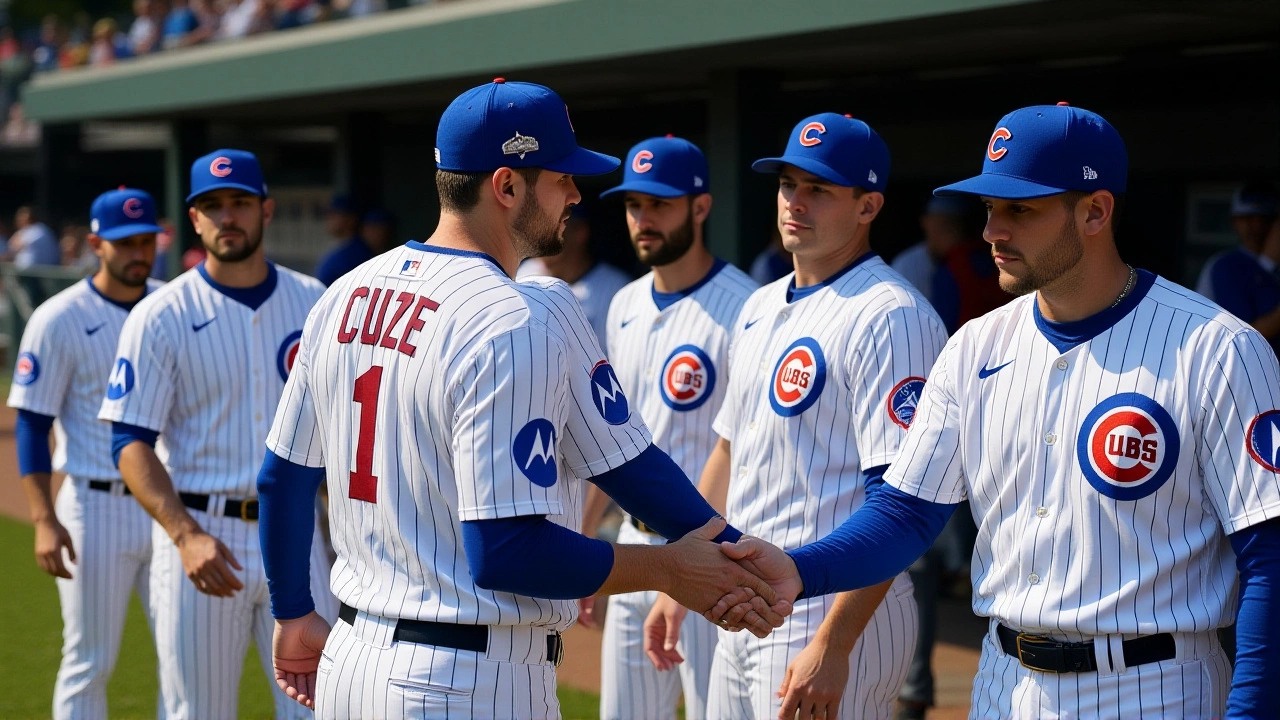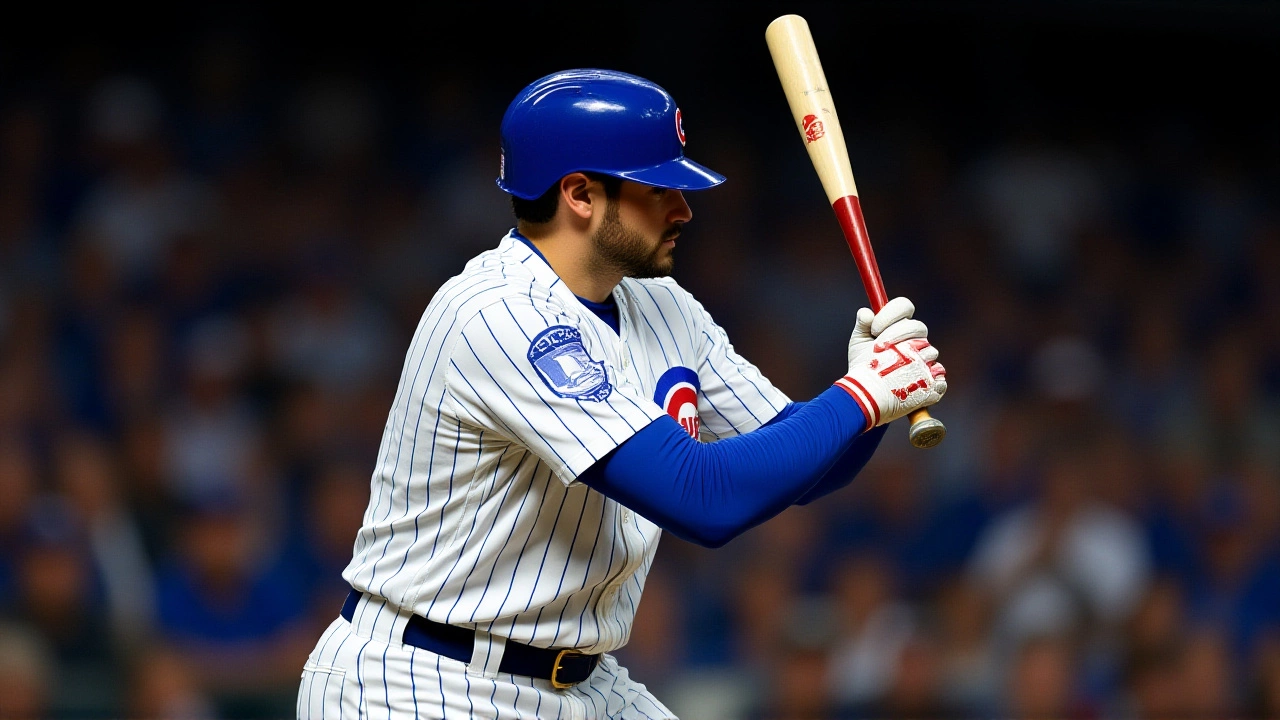Cubs' Offseason Hinges on $400‑Million Kyle Tucker Free‑Agency Decision
12 Oct, 2025When Kyle Tucker, the 28‑year‑old outfielder for the Chicago Cubs, hits free agency after a 2025 campaign that mixed power, speed and a surprising bounce‑back from injury, the entire baseball world leans in.
Insider Jon Heyman told reporters that the Cubs "hardly see themselves dropping more than $300 million" on Tucker, even though the outfielder posted a 143 OPS+ with 22 homers, 73 RBIs, 25 steals and a 4.5 WAR rating over 136 games.
Historical Context: Cubs, Contracts and the Modern Market
The Cubs have a long‑standing aversion to gargantuan deals. Since 2012, the franchise has rarely signed an extension north of $200 million, preferring to build depth through the farm system. That philosophy kept them under the radar for most of the 2010s, but a string of playoff appearances after 2020 forced a rethink.
Chicago’s last mega‑contract was a five‑year, $120 million pact with Anthony Rizzo in 2019. It bought short‑term stability but didn’t translate into a World Series. The lesson? Money alone won’t fix a rotation that finished eighth in the majors with a 3.83 ERA.
2025 Season Overview: Tucker’s Numbers and the Cubs’ Playoff Run
Despite missing the final month with a strained hamstring, Tucker’s 2025 line‑sheet looked like a draft for a fantasy‑football champion. He logged a slash line of .287/.360/.558, swung the bat at a 9.2% strikeout rate, and turned his speed into 25 stolen bases without being caught.
The Cubs rode those performances into a 92‑win season, their best since 2016. They clinched the NL Central and ran into the National League Division Series against the San Diego Padres, falling short in a dramatic five‑game series that ended on a ninth‑inning ground‑out. The loss left a hunger that management hopes to cure with strategic moves.
Free Agency Outlook: Numbers, Structures, and Comparables
Analysts project Tucker’s next deal will be an eight‑year contract somewhere between $336 million and $400 million, which translates to an average annual value (AAV) of $42‑$50 million. For context, Vladimir Guerrero Jr. locked in a $35.7 million AAV with the Toronto Blue Jays, while Aaron Judge receives $35 million per season from the New York Yankees.
One proposed structure floated by agents: an eight‑year, $344 million deal with a $5 million signing bonus, escalating from $38 million in year one to $46 million by year eight. The numbers are flexible, but the market ceiling is clearly rising.
Cubs’ Offseason Strategy: Pitching, Bullpen and Bench Depth
If the Cubs lose Tucker, they have a few in‑house options. Rising prospect Owen Caissie showed flashes of power in the minors and is projected as a potential middle‑of‑the‑order bat. Veteran designer Seiya Suzuki provides a right‑handed swing that could shuffle into a DH role.
On the mound, the rotation still needs a bona fide ace. Matthew Boyd earned an All‑Star nod early in the season but fell off after the All‑Star break, posting a 5.12 ERA in his final 24 starts. Rookie Cade Horton sparked excitement with a 3.40 ERA before a shoulder issue landed him on the injured list.
The bullpen is another puzzle. Reliever Brad Keller, 30, will test free agency after a modest 4.02 ERA across 68 innings. The front office—led by President of Baseball Operations Jed Hoyer—has signaled openness to a trade for a veteran starter or a high‑upside rotation prospect.

Market Competition: Who’s Hot on Tucker?
Across the league, the bidding war is already shaping up. The Los Angeles Dodgers have a reputation for splurging on elite talent—remember the $400 million extension for Mookie Betts. The San Francisco Giants are rebuilding around a young core and could use Tucker’s left‑handed power to bolster an aging outfield.
The New York Mets and Yankees, both with deep pockets, also have expressed interest. A Mets front‑office source told reporters that the team sees Tucker as the missing piece to pair with Pete Alvarez, while the Yankees view him as a long‑term answer to Aaron Judge’s looming free‑agency status.
Even the Chicago Wrigley Field fanbase is split. Some fans hope to keep the home‑grown star, while others accept a “sell‑high” approach that could fund several mid‑level contracts.
- 2025 OPS+: 143
- Projected contract range: $336‑$400 million
- Key comparables: Vladimir Guerrero Jr. ($35.7 M AAV), Aaron Judge ($35 M AAV)
- Cubs rotation ERA: 3.83 (8th in MLB)
- Potential free‑agency destinations: Dodgers, Giants, Mets, Yankees
What Comes Next: Timeline and Decisions
The free‑agency period officially opens on December 2, 2025. Players and agents typically announce intentions within the first week, so expect Tucker’s camp to file a formal request for a meeting with the Cubs by December 5.
If negotiations stall, the Cubs could look to flip Tucker’s value into a package of prospects—perhaps pairing Caissie with a starter like Scott Effross to a contender willing to pay a premium.
Regardless of the outcome, the decision will set a precedent for how mid‑market clubs handle super‑star contracts in the new era of baseball economics.
Frequently Asked Questions
How will the Cubs’ payroll be affected if Tucker leaves?
If Tucker departs, Chicago avoids a $400 million commitment, keeping payroll under the luxury‑tax threshold for the 2026 season. The saved funds could be reallocated to sign a veteran starter, bolster the bullpen, or retain emerging talent like Owen Caissie.
Which team is most likely to outbid the Cubs?
The Los Angeles Dodgers, given their recent willingness to spend (e.g., Mookie Betts’ $400 million extension), are the front‑runner. The San Francisco Giants and New York Yankees also have the financial muscle, but the Dodgers’ track record of winning now makes them the favorite.
What are the Cubs’ primary needs besides Tucker?
Chicago needs a top‑tier starting pitcher to anchor the rotation, a reliable back‑end reliever to replace Brad Keller, and depth on the bench. Strengthening these areas could keep the team competitive without a gargantuan free‑agency contract.
How does Tucker’s projected salary compare historically?
A contract exceeding $400 million would be the second‑largest in MLB history, trailing only the 13‑year, $426 million deal signed by Mike Trout in 2019. For an outfielder, it would set a new benchmark, surpassing the $330‑million agreement that Mookie Betts secured with the Dodgers.
When will Tucker officially announce his decision?
Players typically issue a formal statement within the first week of free agency. Expect Tucker’s camp to hold a press conference no later than December 8, 2025, after initial talks with the Cubs and interested clubs.

 by
by